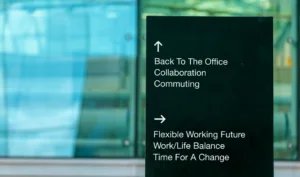
Side Hustles: Why Smart Employers Support Moonlighting
When it comes to careers, many of us no longer depend on a single source of income. In fact, people are turning to side hustles

When it comes to careers, many of us no longer depend on a single source of income. In fact, people are turning to side hustles

In recent years, digital transformation has been one of the hottest topics in leadership circles. Technology is central to this kind of complex, large-scale endeavor.

Over the years, worktech solutions of all types have repeatedly promised to transform the workplace. Still, employers aren’t so sure. In fact, it can feel

As technology continues to evolve, so does the way we connect and work with others. One of the newest advances in technology is the metaverse,

Leaders, do workforce engagement issues keep you up at night? If not, here’s a powerful wake-up call from Gallup. Last year, the global employee engagement

These days, any employer that doesn’t lead with purpose is fighting an uphill battle. Why? Take a look at recent headlines. They’re filled with news

Are you disturbed by news about organizations backtracking on workplace diversity and inclusion commitments? I certainly am. For example, a recent Wall Street Journal article

A strong internal communications function is essential for every company, both culturally and operationally. It helps keep employees aware of relevant news and updates, excited

In today’s fluid, fiercely competitive business environment, many organizations continuously strive to stay ahead of the curve. They know success requires an ongoing commitment to

People often ask me which HR trends should be on their radar. It’s a fair question, because I organize two of the HR profession’s most

For more than two years, employees have slowly — and sometimes reluctantly — returned to their workplaces. Leaders have been trying to instill a sense

For most of the last three years, millions of people clocked in at work from the comfort of home. Now, eager to return to a

Three years ago, the pandemic lockdown triggered a wave of relentless workplace change. Over time, we’ve all had to revamp our attitudes, expectations and behaviors

The pandemic has sparked a global conversation about whether people who’ve been working from home should be free to choose their preferred work location. It’s

We don’t need research to tell us the future of work will be much different from pre-pandemic norms. But Covid isn’t the cause. Disruption was

Predicting the unexpected is a tricky process — especially in the world of digital innovation, where change and disruption are a way of life. But

Have you noticed that workforce engagement and motivation are slipping? You’re not the only one. In April, Gallup confirmed that U.S. workforce engagement declined from

In 2020, our most popular blog post discussed how leaders could move forward when Covid abruptly forced many of us to work from home. I

Sponsored by Reejig Countless HR tools, applications, and platforms now rely on artificial intelligence in some form. Users may not even notice that AI is

These days, we’re flooded with headlines about The Great Resignation, The Big Quit, and The Great Reshuffle. It’s not surprising. The desire for career advancement

EDITOR’S NOTE: This is the last article in a 4-part series sponsored by Unit4. The series outlines a new approach to talent strategy for people-centric

Sponsored by: Ivanti You’ve heard the adage “measure twice, cut once.” It’s good advice from the sewing world. The idea is to encourage people who

Early in 2020, without warning, the pandemic made distributed teams a standard way of working for organizations all over the globe. Now, many employees have

We must plan for caregiving instead of waiting for the medical crisis. Lack of planning is sadly the typical scenario for the vast majority of

Sponsored by: Nationwide With 2022 shaping up to be much more economically challenging for many people, more so than in 2021, folks are doing what